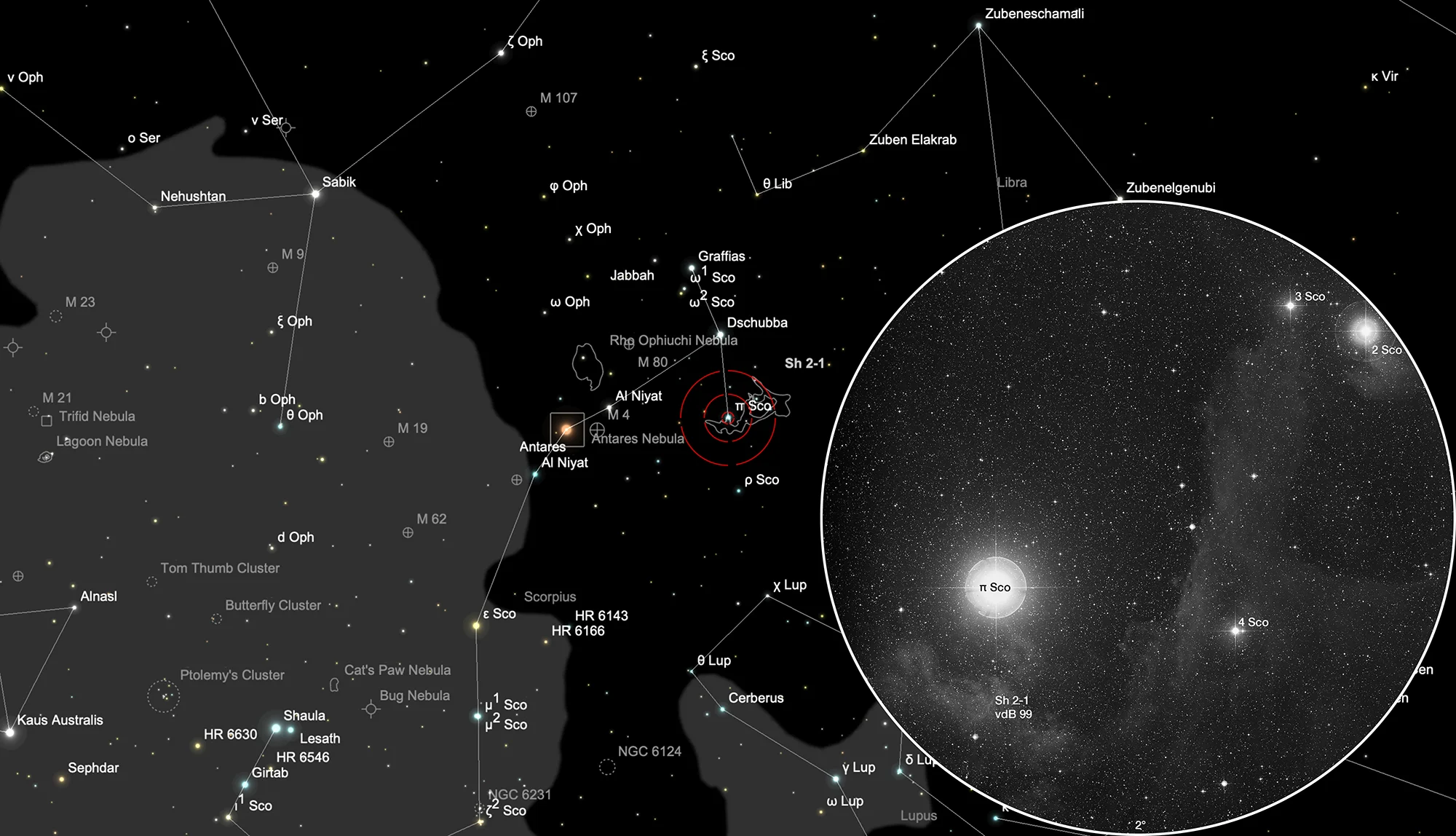Pi Scorpii Nebula (Sh 2-1, vdB 99)

History
In 1894 Edward Emerson Barnard discovered on his photographic plates a faint nebula around stars π and δ Scorpii. From February until September 1905 the Bruce Photographic Telescope of Yerkes Observatory was installed on Mount Wilson to take the best possible photographs of the Milky Way as far south as the latitude would permit. During a two-night period from April 29 to April 30, Barnard exposed a photographic plate for 8 hours and 40 minutes, revealing a nebula spanning 4.5° to 5° in width. He described it as a long, wavy, irregular mass with diffuse branches. It became evident that the nebula and the bright stars were closely associated, suggesting that the stars had originated from the nebula. This challenged the prevailing theory of the time, which held that nebulae were composed of stars too small to be individually resolved, though it seemed to apply to other types of nebulae, such as spiral nebulae, rather than to this particular case. [44]
In the late 1950-ies the American astronomer Stewart Sharpless discovered the large nebula Sh 2-1 on the 48 inch Schmidt telescope photo plates of the «Palomar Observatory Sky Survey». In 1959 he published his discovery together with 313 H-II regions in a catalogue. He classified it as a bright nebula of irregular shape with 150 arc minutes diameter some amorphous to filamentary structure. He noted: «Source of excitation: π Sco.» [310]
In 1966 Sidney van den Bergh also searched the «Palomar Sky Survey» photographic plates, but this time for reflection nebulae and identified the nebula surrounding π Scorpii. He included it as vdB 99 in his 1966 «Catalog of Reflection Nebulae» and classified it as a medium bright, very blue nebula with weak absorption, illuminated by a star outside. Radius on the blue prints 100 arcminutes and red prints 43 arcminutes. [255]
Physical Properties
The 2.9 magnitude bright star π Scorpii is a eclipsing binary star of spectral type B1V+B2, which excites the surrounding gas in the red H-II emission line and reflects its blue light from interstellar dust. No distance information is available in Simbad. [145]
Finder Chart
The nebula Sh 2-1 is located in the constellation Scorpius around the 2.9 mag bright star π Scorpii. On 23 May it is in opposition to the Sun and culminates at local midnight. The best time to observe is January to October.
